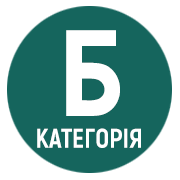Requirements for articles
The article is submitted in the original language in an electronic version to the collection's e-mail.
Technical design of the text of the article
Margins: top - 2 cm, bottom - 2 cm, left - 3 cm, right - 1.5 cm. Paragraph indentation – 1.25 cm.
Font: Times New Roman, kegel (size) 14, interval - 1.5.
The text is typed without hyphens, on the entire width of the page. It is allowed to highlight key concepts in bold, quotes in italics. It is necessary to use straight quotation marks (even - "..."). When typing, you need to distinguish between hyphen (-) and dash (–) characters.
The materials are arranged in the following sequence:
1) UDC;
2) DOI (provided by the editor);
3) TITLE OF THE ARTICLE;
4) name and surname, academic title, scientific degree, position, place of work, e-mail, orcid of the author;
5) abstract (230-250 words), keywords;
6) name and surname, academic title, scientific degree, position, place of work of the author in English;
7) TITLE OF THE ARTICLE in English;
8) abstract (230-250 words), keywords in English;
9) the text of the article;
10) literature (issued according to DSTU 8302:2015). Sources are given in alphabetical order (separate paragraphs with an indentation of the first line - 1 cm) with automatic numbering;
11) References, transliterated in Latin letters (APA style).
Requirements for the title of the article
The title of the article should be informative, clearly correspond to the content of the article, and NOT contain abbreviations.
Abstract and keyword requirements
An abstract is a brief description of a scientific article from the point of view of its purpose, content, type, form, and other features.
The annotation performs the following functions:
- makes it possible to get an idea of the content of the scientific article, determine its relevance to the title of the article and the need to refer to the full text of the article;
- used in information, including automated, systems for searching for information.
The abstract should include a description of the main topic, the problems of the scientific article, the purpose of the work and its results. The abstract indicates that the relevant article brings something new compared to others related in terms of subject matter and purpose.
The abstract should not contain abbreviations.
Keywords:
- from 5 to 7 words;
- do not contain abbreviations;
- are presented in the nominative case; separated by commas.
The main text of the article should contain the following components:
Introduction (the relevance of the research is revealed; the problem statement and analysis of previous research and publications are carried out; the purpose and tasks are formulated).
Research methods and techniques (the procedure of theoretical-methodological and/or experimental research is highlighted).
Results and discussions (the main material is presented in such a way that the essence of the theoretical and/or empirical research is clear; discussions regarding the highlighted issues).
Conclusions (generalization of the results is carried out, prospects for further research are foreseen).
Requirements for making references to literary sources in the text of the article
In the text of the article, references are given in square brackets. It is necessary to indicate the item number in the list of used literature and the page: [1, p. 14-15]. If a reference is made to several sources at the same time, their numbers are separated by semicolons: [1; 3].
The list of references must contain ALL scientific sources whose authors' names are mentioned in the text of the article.
Requirements for creating a list of references
1. Literature is issued in accordance with DSTU 8302:2015.
2. References are drawn up according to the APA standard.
3. The transliteration of the authors' surnames, depending on the language of the original source, is carried out in accordance with the Resolution of the Cabinet of Ministers of Ukraine dated January 27, 2010 No. 55 "On regulating the transliteration of the Ukrainian alphabet into Latin" (for the Ukrainian language).
4. To transliterate literary sources, you need to use the program http://ukrlit.org/transliteratsiia
5. It is mandatory to specify the LANGUAGE of the used source in square brackets - for example, [in Ukrainian] or [in English].
6. In the transliterated list of references, after the title of the work in square brackets, there should be a translation of this title into English, after the title of the journal - a translation of this title into English through a dash.
Examples of literature design according to the APA standard
Honcharova, T. (2017). Zhanrovi transformatsii dyskursu futbolnyh fanativ: psykholinhvistychnyj pidkhid [Genre Transformations of the Football Fans’ Discourse: Psycholinguistic Approach]. Psykholingvistyka – Psycholinguistics, 22(2), 12–27. [in Ukrainian].
Vyshnevskyi, O.S. (2020). Vplyv tsyfrovizatsii na promyslovist: problemy vyznachennia v krainakh YeS [Impact of digitalization on industry: problems of definition in EU countries]. Ekonomika promyslovosti – Economy of industry, 1(89), 31–44. [in Ukrainian].






